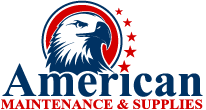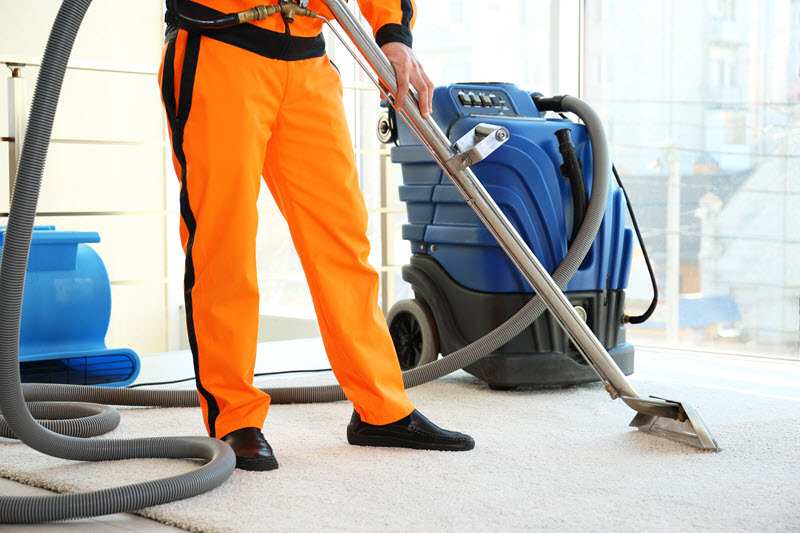If you don’t have a carpet maintenance program as a part of your cleaning regimen, you could be looking at a major (and unexpected) expense down the road.
As you know, your flooring is one of the biggest assets in your building. It has a predetermined life expectancy – IF it’s taken care of properly. It’s immediately visible to visitors, so when it starts to look old and worn, it’s a definite priority for replacement. Unfortunately, it’s very expensive to replace— but if it’s properly maintained, you can budget accordingly and replace it on your own timeline rather than as an emergency measure.
If your cleaning company is meeting your expectations, it should not only offer regular office cleaning but a floor care program outlining the best schedule to clean all the surfaces in the building, including carpet cleaning. Here are some examples of what a carpet maintenance program might look like for your building.
Cleaning vs Maintenance
You might think that occasional cleaning will be sufficient to keep your carpets in good shape for years to come. In fact many facilities wait until the carpet looks soiled to have it cleaned. But waiting until you can see the soil means you’ve waited too long – your carpet now has a very heavy soil load, which makes it harder to keep clean going forward. And occasional cleaning makes it tough to remove stains or soil from the depths of the fibers, which are what contributes to the damage of your flooring.
Maintenance, on the other hand, involves scheduled cleanings that maintain the clean look of the carpet. At least once a year, or more depending on the foot traffic your flooring sees, your cleaning service should do complete hot water extraction for all the carpets in the building. Other carpet cleaning methods used for interim cleaning include encapsulation cleaning and bonnet cleaning, but we’ll get into those a little later. Regular maintenance will make the difference between replacing your carpet far sooner than you expected and having an attractive, long-lasting asset that will contribute to the overall appearance of your building.
Your Carpet Maintenance Program
A properly planned maintenance program will not depend solely on the appearance of your carpet. As mentioned, if your cleaning company waits until the carpet looks dirty, it’s already too late: the damage has been done, and your carpet is deteriorating. Instead, your cleaning service should take into account the traffic that occurs in every part of the building and create a specific plan for each section.
Of course, any carpet maintenance program should be accompanied by regular routine cleaning as well as carefully placed mats at every entrance and exit to reduce the amount of dirt and debris that makes it into the building.
If your service does a complete hot water extraction all over your building once a year, that might not be sufficient. Your entry/reception area is probably the recipient of the heaviest foot traffic, so that’s the area that will need the most frequent cleaning to preserve the flooring. You might consider having your cleaning service do a deep clean here every month or two, just to keep the dirt and soil from grinding into the carpets, damaging the fibers and requiring an earlier-than-planned replacement. Plus, as the reception area is the first place that visitors see, you want the flooring to look its best. A negative first impression is difficult to reverse, so be sure that your entry is immaculate.
Your hallways probably get a medium amount of foot traffic, so they’ll only need to be cleaned quarterly. Office areas should be cleaned twice a year, particularly by the doors and under the desks, and rarely used conference rooms or board rooms only need an annual deep cleaning to maintain their appearance.
Carpet Maintenance Program Cleaning Techniques
There are three frequently utilized methods for cleaning deep into your carpet’s fibers. Here’s a rundown of each method, and why they might be used in your carpet maintenance program.
Bonnet Carpet Cleaning— This is a low-moisture method, and it’s strictly for professionals. If it’s not done correctly, it can lead to damage to the carpet that could void your flooring’s warranty. It involves the application of a moistened cotton or microfiber pad to a rotary shampoo machine. (You can use a rayon pad, but that’s considered risky; cotton and microfiber are safer for your flooring.) The rotating motion of the pad will agitate the soils, allowing them to be absorbed by the bonnet pad. Of course, the pad will need to be changed with some frequency, as it will become dirty as the soil is absorbed.
Encapsulation Carpet Cleaning— Encapsulation is another method that doesn’t use a lot of moisture, and it’s considered to be an interim method that will maintain your carpet until you can do a hot-water extraction. Basically, the process involves spreading a chemical known as an encapsulant over the carpet, and allowing it to sit for 10-15 minutes before you work the substance into the carpet with a rotary machine or a brush. After the carpet is dry, you vacuum the encapsulated soil and debris.
Hot Water Extraction— This method is pretty self explanatory. A machine heats water, and then your cleaning team uses a special machine to inject the water combined with a cleaning solution into the carpet, thus removing dirt. Then, the machine pulls the water mixture out of the carpet, allowing it to dry in relatively little time, perhaps with the aid of high speed carpet fans.
Consult with your cleaning service to determine the best schedule for deep cleaning the flooring in your building, based on the traffic flow and usage, and discuss the method that they feel is most effective, too.
Are you seeking a service to help you create a carpet maintenance program in the New York City and greater New Jersey area? We’d be happy to help. Contact us for more information today.

